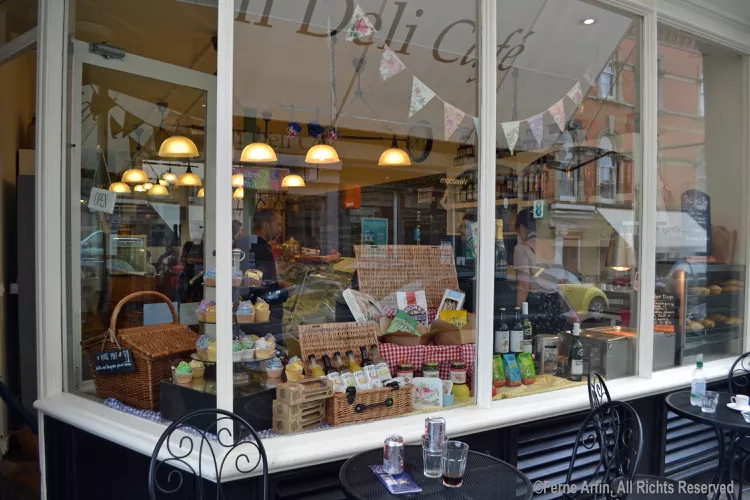Contents Summary
Explore the Hidden Gem of Clifton Village
Clifton Village, a pristine Georgian enclave located in the heights of Bristol, may well be the city’s best-kept secret. Many visitors stumble upon this charming village on their way to the iconic Clifton Suspension Bridge, crafted by Britain’s visionary engineer Isambard Kingdom Brunel in the 19th century.
If you appreciate quaint streets adorned with unique old buildings, serene garden squares, and independent shops that beckon you to stop for a snack, drink, or meal, Clifton Village is bound to captivate you.
Often referred to as a suburb of Bristol, this neighborhood consists predominantly of 18th and early 19th-century terraces, interspersed with commercial streets. It’s bordered to the north by the lush, wooded parkland of Clifton Downs and to the west by the dramatic Avon Gorge.
Things to Do and Getting There
Things to Do
- Take a Walk – Many of Clifton’s streets feature Grade I and II listed Georgian terraces. Explore landmarks such as Princess Victoria Street, Caledonia Place, Royal York Crescent, and Sion Hill for a glimpse of some of the most beautifully maintained homes. Don’t miss the scenic lookout on Sion Hill for a breathtaking view of the Clifton Suspension Bridge.
- Shop – Discover key shopping streets such as The Mall and Princess Victoria Street. For a unique shopping experience, visit 18, an independent boutique on The Mall that offers distinctive clothing and accessories, or explore The Clifton Arcade, a beautifully restored Victorian arcade filled with antiques and bespoke goods.
- Eat, Drink, and Be Merry – Enjoy the quaint restaurants and pubs in the area. One popular spot is The Mall Deli Café, where you can indulge in fresh salads, sandwiches, and delightful cupcakes. The Brunel pub (0117 973 4443, 38 The Mall) is a great place to mingle with locals over burgers and BBQ, while the Coronation Tap offers live music and a selection of West Country Cider in a historic setting.
Getting There
- From Bristol Temple Meads Railway Station, take the Number 8 bus directly to Clifton Village.
- If you opt for a sightseeing experience, the City Sightseeing Bristol open-top bus tour will drop you off at Stop No. 9 for Clifton Village.
- The bridge serves as the symbol of Bristol – Interestingly, it is not entirely within the city limits. Over the hundred-plus years that led to its completion, various organizations managed its construction. Although now part of the national road network, it is owned by a trust, with markers indicating the boundaries of Bristol and North Somerset.
- Brunel’s Masterpiece – While Isambard Kingdom Brunel is renowned for the bridge, he unfortunately never witnessed its completion. The completed structure deviated significantly from his original vision, which weaves a narrative of competition and determination among engineers of the time.
- Structural Integrity – Though it appears to be solidly constructed of brick, stone, and iron, the bridge “floats” on a set of anchors, with chain salvaged from another Brunel bridge providing supporting structure. This innovative design permits flexibility under stress.
- Cable Support – Contrary to expectation, the cable supports for the bridge’s roadway are not cables at all but rather solid, vertical rods made of wrought iron.
- Modern Use – Originally designed for horse-drawn carriages, the bridge has accommodated modern vehicles for over a century, with an impressive daily traffic ranging from 11,000 to 12,000 cars.
After lunch, venture north to Clifton Downs and follow the road upward through the park to reach the Clifton Suspension Bridge.
Surprising Facts About The Clifton Suspension Bridge

No one can dispute the beauty of the Clifton Suspension Bridge spanning the Avon Gorge. Its impressive 702-foot span, with a deck height of 245 feet, is a Grade I listed building and a marvel of 19th-century engineering that almost never came to fruition. A trip to Bristol is incomplete without experiencing its magnificent views.
Additionally, the bridge’s history is filled with surprising and intriguing facts:
Visitor Center and Tours
A fascinating exhibition in the Visitor Information Center on the Leigh Woods side delves into the bridge’s construction and noteworthy historical events.
Among these stories is that of a woman who leapt from the bridge in 1885 and survived, thanks to her bulging Victorian attire. She lived to be 84, passing away in 1948.
By the 1930s, the extreme stunt of flying under the bridge was common until it became illegal. A daring RAF pilot attempted this in 1957 at a speed of 450 mph but tragically did not survive the maneuver.
The Visitor Center, featuring a shop that sells postcards and gifts, operates daily from 10 am to 5 pm, excluding Christmas Eve, Christmas Day, and Boxing Day. Free guided tours rich with insights into the bridge’s history are available each Saturday and Sunday at 3 pm from Easter to October.





